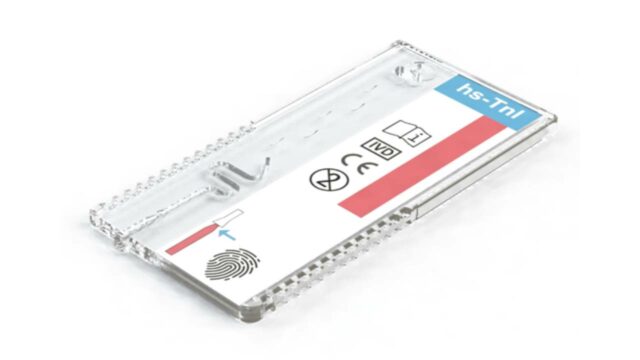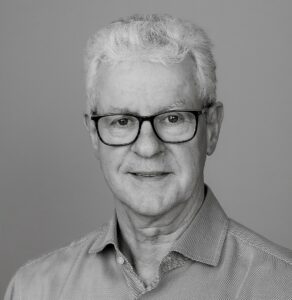Medivir optimizes study design after meeting FDA
Medivir has held another meeting with the FDA concerning the upcoming global phase IIb study, in which the company’s drug candidate, fostrox, will be evaluated in combination with Lenvima in liver cancer patients. The aim is to initiate the study in the US by early 2025.
– We have great momentum in the development program with fostrox right now, says Medivir’s CEO Jens Lindberg.
Medivir is developing the drug candidate fostrox (fostroxacitabine bralpamide) for the treatment of primary liver cancer, hepatocellular carcinoma (HCC) – the fifth most common form of cancer and the third most common cause of cancer death worldwide.
The goal is to establish fostrox as the first approved option when the standard treatment, Tecentriq/Avastin, is ineffective or not tolerated. Foxstrox has Orphan Drug Designation for the treatment of HCC in the US and Europe.
Clinical trials reveal sustained patient advantages
The company is assessing the candidate’s safety and tolerance in a fully enrolled phase Ib/IIa study combined with the cancer drug Lenvima. In late 2023, findings from the 18 patients with a minimum of 12 weeks of follow-up indicated enduring patient benefits, which become more pronounced with prolonged treatment duration.
The goal is to conduct a phase IIb study and obtain accelerated approval from the US Food and Drug Administration (FDA), which would mean a shorter time to market approval.
Type C meeting held with FDA
Last autumn, Medivir held a Type D meeting with the FDA, which was positive regarding critical parts of the design for the planned global phase IIb study. The next step, a Type C meeting, has now been held with the FDA, which resulted in an optimized study design for the upcoming study.
In summary, Medivir plans to use an improved capsule formulation of fostrox. Therefore, an initial dose run-in is required as part of the study, with additional patients and a lower dose to strengthen the study design.
Furthermore, the primary endpoint will be changed to Objective Response Rate (ORR), an accepted surrogate endpoint for survival, with secondary endpoints such as duration of response, progression-free survival, and overall survival. According to the company, ORR has supported accelerated approvals in previous HCC studies.
Progress with MIV-711
In addition to the positive interactions with the FDA regarding fostrox, Medivir has also made significant progress with the candidate MIV-711.The FDA has granted MIV-711 both Rare Pediatric Disease Designation (RPDD) and Orphan Drug Designation (ODD) for the treatment of Legg-Calvé-Perthes disease (LCPD).
Securing RPDD and ODD offers numerous regulatory incentives and advantages that can prove pivotal in advancing treatments for rare pediatric diseases.
BioStock will get back with a separate interview with the company regarding these regulatory advancements.

Comments from the CEO
BioStock reached out to Medivir’s CEO Jens Lindberg for a comment on the Type C meeting with the FDA and how the changed study design could potentially increase the chances of success.
Jens, could you provide some additional context behind the new study design you’ve recently adopted?
– The most important is that the changes we are making after the dialogue with the FDA partly strengthen the study design and thus the results that the study will show, but equally important is that our original plan and purpose for the study remains as before and that the size and timing are in line with the previously communicated plan. For example, one of the advantages of ORR as a primary endpoint is that it can be read out faster/earlier than progression-free survival.
Can you briefly explain how you relate to the FDA’s Project Optimus, which seeks to reform dose optimization and selection for oncology drug development?
– The FDA’s Project Optimus is a project that aims to enable companies in drug development to identify a so-called minimally effective dose. In the development work with fostrox, we have previously developed with the same goal, i.e. to find the best balance between efficacy and side effects. This is one of the reasons why we chose to proceed with 30 mg dose expansion in our ongoing study, even though we have not yet reached the maximum tolerable dose. By adding an initial dose run-in arm with a lower dose, we further strengthen our program in our ambition to meet the recommendations of Project Optimus. A change that will contribute positively after the completion of the study in our interactions with the FDA and other regulatory authorities.
You’re aiming to kick off the phase IIb study as early as the beginning of 2025. What key milestones must be reached before commencing these studies?
– The first is to establish a collaboration with a CRO and then finalize a study protocol. This then forms the basis for a successful implementation of a so-called study feasibility and application for approval of the study to authorities in the countries where we plan to conduct the study. The work to identify the best CRO partner began at the beginning of 2024 and it is a work that has progressed in a very good way. We have received a great deal of interest from all the companies we have contacted to be involved in this study together with us, so we feel that we have a continued good momentum.












